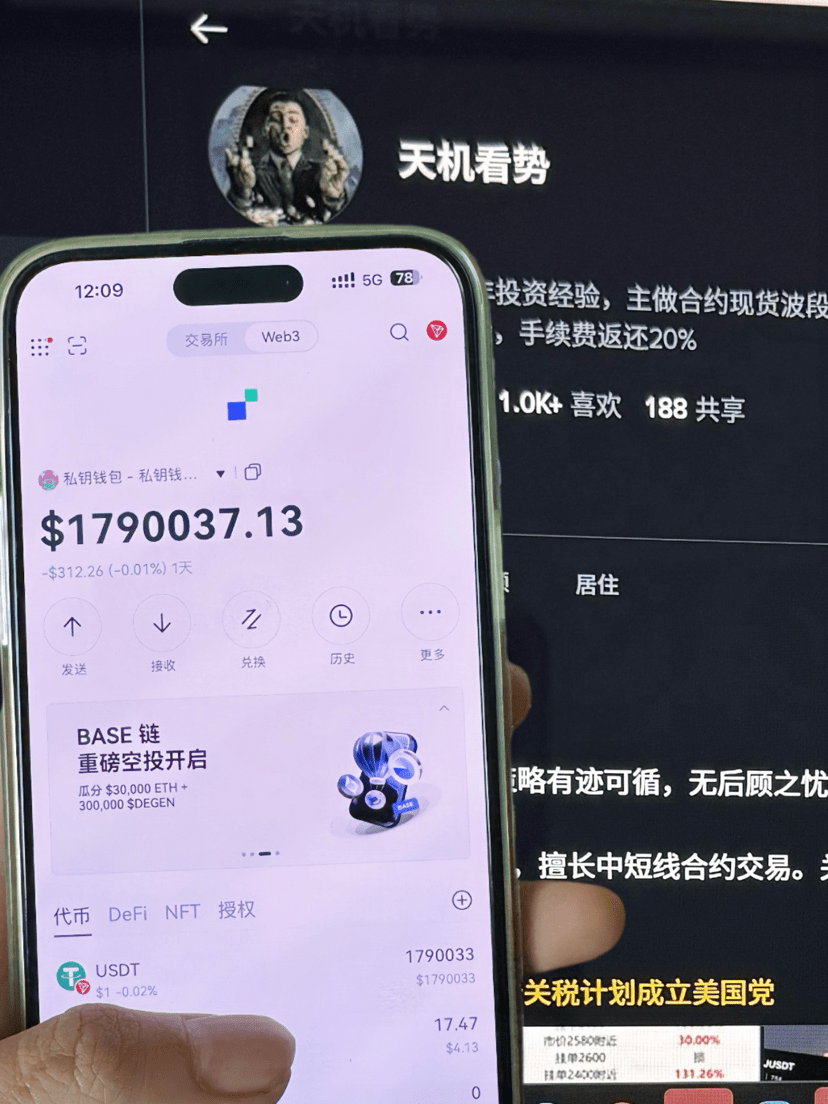Many people keep asking the same question: how much leverage should be used in perpetual contracts? This question seems simple but has cost countless retail investors dearly. I've seen too many people obsessed with the temptation of high leverage, only to realize one painful truth during their liquidation: leverage is not for making money; it's for controlling risk.
Let's first talk about the essence of perpetual contracts. They indeed don't have an expiration date and can be held indefinitely, but that's precisely the most dangerous aspect. Many people mistakenly believe that 'holding indefinitely' means 'being able to bear positions,' and as a result, they get wiped out in market fluctuations. Remember, the biggest feature of perpetual contracts is not to let you hold for the long term, but to allow you to close positions at any time.
Choosing leverage is a technical task and also a psychological battle. Many people think that using 30x, 50x, or even 100x leverage is exciting, but they haven't calculated the risk: 100x leverage means that a 1% price movement in the opposite direction will lead to liquidation. In the cryptocurrency market, a 1% fluctuation is as common as breathing. How many people have you seen survive more than three days with 100x leverage?
Let's look at a real-world example. Bitcoin is currently around $116,000. Opening a 1x leverage position requires a $11,600 margin, 10x requires $1,160, and 100x only $116. It seems that the threshold for high leverage is low, but what is the cost? You will be forcibly liquidated the moment the market sneezes. Those who open 100x leverage often can't withstand even a normal market correction.
Those who truly understand trading never get hung up on leverage multiples; they think about more fundamental questions:
- How much am I willing to lose on this trade?
- Where should I set my stop loss?
- What percentage of my total capital does this position represent?
- In the worst-case scenario, how much will I lose?
This is the correct way to think. Leverage is just a tool; the key is how you use it. I know a friend who trades contracts very steadily; he never uses more than 5x leverage, but he consistently profits every month. His secret is simple: strictly control the risk of each trade and never let a single loss exceed 2% of his capital.
The biggest taboo in contract trading is holding onto losing positions. The market will not move according to your 'belief.' Those who hold onto positions under high leverage end up as fodder for the market. Remember, as long as you are alive, there is a chance; once you are liquidated, you lose everything.
Speaking of steady profits, many people look down on earning 2% a day. But have you considered that if you have $5,000 in capital, making a stable profit of $100 a day would amount to $2,000-$3,000 a month? This is far superior to those who make $5,000 today and lose $10,000 tomorrow. The magic of compound interest lies in consistency, not in sudden profits.
Finally, here are a few practical suggestions for you:
1. Beginners should start practicing with 3-5x leverage; don't jump straight into high leverage.
2. Always set a stop loss and strictly enforce it.
3. The risk of a single trade should not exceed 2% of your capital.
4. Move your stop loss promptly to protect your profits after making gains.
5. Set daily profit targets and stop trading once you reach them.
Remember, contract trading is not gambling. Those who are profitable in the long run do not achieve it because they use high leverage, but because they know how to control risk. The market will always have opportunities, but your capital is only available once. Don't let high leverage be the end of your trading career.
#ETH巨鲸增持 #下一任美联储主席人选 #美国加征关税 #加密股IPO季

